12 Types of Houseplants That Clean Indoor Air
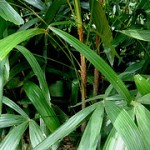
Common Name: Lady Palm (plus 10+ varieties)
Botanical Name: Rhapis Excelsa
Benefits: These types of houseplants are said to be a good overall air purifier, removing most air pollutants.
Notes: Prefers partial sun all day and shade in the winter, with more frequent water in hotter months, but never allow to sit in water or be overwatered.
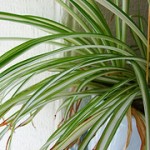
Common Name: Spider Plant
Botanical Name: Chlorophytum comosum
Benefits: NASA places this plant among the top 3 types of houseplants that are great at removing formaldahyde. Also removes carbon monoxide and other toxins or impurities.
Notes: Likes bright, indirect light and lots of water while growing.
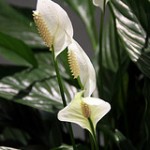
Common Name: Peace Lily
Botanical Name: Spathiphyllum sp.
Benefits: Known for removing benzene, a common household chemical and known carcinogen. It’s also said to remove mold spores in the air, making it great for bathrooms, kitchens and laundry rooms; purifying the air of trichloroethylene, a chemical found in cleaners and solvents; and removing alcohols, acetone, and formaldehyde.
Notes: Easy to care for, it prefers lots of water, less often and bright, indirect light.
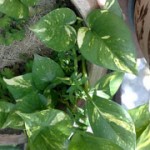
Common Name: Golden Pothos
Botanical Name: Epipremnum aureum syn. Scindapsus aureus
Benefits: NASA places this plant among the top 3 types of houseplants great for removing formaldhyde. Also known for removing carbon monoxide and increasing general indoor air quality.
Notes: Needs less water in colder temps and partial sun.
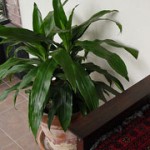
Common Name: Janet Craig
Botanical Name: Draecana Deremensis
Benefits: Lady Palm is said to be a good overall air purifier, removing most air pollutants.
Notes: Prefers indirect sunlight, and watering without fertilizers.
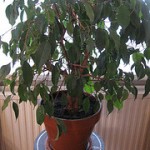
Common Name: Weeping Fig or Ficus Tree
Botanical Name: Ficus Benjamina
Benefits: Known to remove common airborn toxins and increase oxygen levels.
Notes: Prefers bright light and sun, but is also shade-tolerant. Moderate water needs for these types of houseplants.
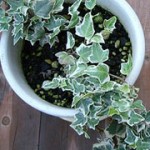
Common Name: English Ivy
Botanical Name: Hedera helix
Benefits: It’s known for removing the chemical benzene, a known carcinogen found in cigarette smoke, detergents, pesticides, and the off-gasing of other synthetic materials, is said to be fantastic for asthma and allergies and also removes formaldehyde.
Notes: Can be invasive, making it great for a potted plant.

Common Name: Chinese Evergreen
Botanical Name: Aglaonema sp.
Benefits: Emits high oxygen content, and purifies indoor air by removing chemicals, such as formaldahyde, benzene or other toxins.
Notes: Does well with full shade and good draining; variegated plants need more sunlight. The sap of this plant is considered poisonous and is an irritant.
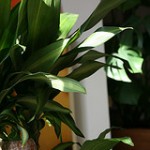
Common Name: Corn Cane or Mass Cane
Botanical Name: Dracaena massangeana or dracaena fragrans Massangeana
Benefits: Known for removing formaldahyde and known generally as one of the houseplants that clean the air.
Notes: Does great with low light and low water.
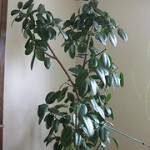
Common Name: Baby Rubber Plant
Botanical Name: Peperomia obtusifolia or Ficus robusta
Benefits: These houseplants clean the air by emitting high oxygen content, and purifies indoor air by removing chemicals, such as formaldahyde or other toxins.
Notes: Likes filtered light, infrequent watering and rich soil. I’ve found conflicting information as to whether or not this plant contains any poisonous parts.
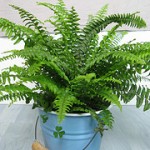
Common Name: Boston Fern
Botanical Name: Nephrolepis exaltata Bostoniensis
Benefits: Said to act as a natural air humidifier, removes formaldahyde and is a general air purifier. Said to be among the best in air purifying houseplants.
Notes: Likes bright light and damp soil but can be tolerant of drought or partial light.
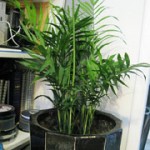
Common Name: Areca Palm
Botanical Name: Chrysalidocarpus lutescens
Benefits: General air purifier, especially as it grows larger. It’s known for being one of the better performers in purifying the air.
Notes: Moderately drought tolerant and prefers partial sun and well-drained soil.
More information can be found at Sustainable Baby Steps. Material and images courtesy of Sustainable Baby Steps.
